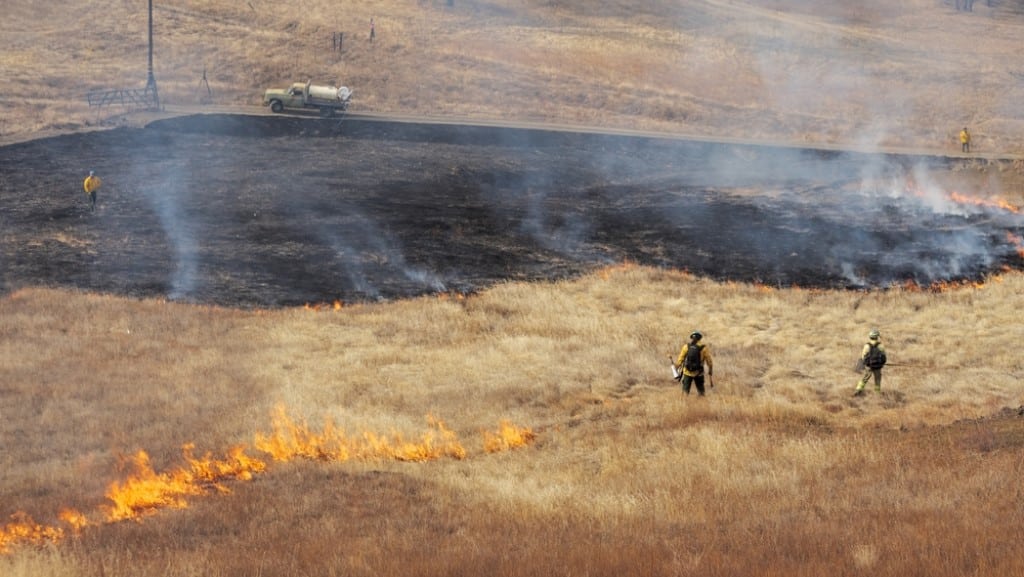Cultural Burning in Australia: An Ancient Practice for Modern Challenges
- September 15, 2023
- 10:10 am


Iain Hoey
Share this content
Amidst the towering eucalyptus trees and aromatic foliage, a carefully controlled fire dances in the Australian bush.
While these fires may appear alarming to some, they are a manifestation of a practice deeply rooted in Indigenous knowledge.
As the continent steels itself for the upcoming bushfire season, the age-old tradition of “cultural burning” is gaining renewed attention.
Understanding Cultural Burning
At its core, cultural burning is not just about preventing bushfires, but it’s about maintaining a balance between humans and the environment.
Handed down through countless generations, this Indigenous technique aims to rid the land of excessive undergrowth that can be a catalyst for uncontrolled wildfires.
Unlike the broad-brushed hazard reduction burning conducted by conventional rural fire services, cultural burning is a refined method tailored to the unique landscape and ecology of a given area.
How Does Cultural Burning Work?
- Focused Approach: Instead of large-scale burns, cultural burning focuses on smaller patches, ensuring animals and birds can move away, and critical ecosystems remain undisturbed
- Timing: Burning takes place during cooler periods, often in the evenings, reducing the chances of a fire escalating uncontrollably
- Preservation: Special care is extended to safeguard trees, especially ancient ‘scar trees’ that hold significant cultural value to Aboriginal communities. Richard Geddes, a Jagun programme manager, emphasises that the tree canopy is considered sacred. The aim is to prevent fires that scorch these canopies, which could lead to an unhealthy surge in new growth
Cultural Burning: Why Now?
Australia’s 2019-2020 ‘black summer’ bushfires were a jarring reminder of nature’s fury, consuming areas as vast as Turkey.
Such devastating events, coupled with escalating global temperatures and the resultant fires worldwide, have compelled Australians to look at holistic methods to mitigate future disasters.
Anastasia Guise from Billen Cliffs Village believes that cultural burning is one of the key solutions that many had overlooked until recently.
A Win-Win Solution?
The resurgence of cultural burning does not only protect the land.
The Jagun Alliance Aboriginal Corporation (Jagun) plays a pivotal role in this resurgence, imparting the knowledge of cultural burning and its nuances.
It also presents a precious opportunity for Aboriginal communities to both preserve their rich heritage and equip themselves with skills that have immediate real-world applications.
Furthermore, initiatives like Jagun’s are bridging the gap between modern Australia and its Indigenous roots.
With support from institutions such as the Australian government’s National Emergency Management Agency, Jagun has extended its reach, offering community workshops on bushfire recovery and preparedness.
For landowners like Michael Smith, who witnessed nearly 75% of his property succumb to the inferno in the 2019-2020 bushfires, cultural burning and its associated practices offer hope.
For Smith, as for many Australians, bushfires are an undeniable aspect of life.
However, with the lessons of cultural burning, this reality can be met with both respect for tradition and a proactive approach to safety.
IFSJ Comment
In the vast spectrum of fire management techniques, cultural burning stands out not merely as a reactive measure, but as a proactive symbiosis of cultural heritage and contemporary fire safety.
This Indigenous Australian practice has been nurtured for thousands of years, refined through intimate knowledge of the land and its ecological rhythms.
As the world grapples with the escalating challenges of climate change, this time-tested methodology offers a potent blend of tradition and efficacy.
The renewed emphasis on cultural burning in Australia is a significant reminder for fire safety professionals globally: that innovation isn’t always about creating something new, but often rediscovering and adapting ancient wisdom for modern challenges.
The meticulous approach of cultural burning — from the selection of specific sites, optimal times, to the preservation of ancient trees — underscores the importance of detailed, localised knowledge in fire safety management.
For our readers and fire professionals worldwide, the resurgence of cultural burning should inspire a deep dive into localised fire management practices, wherever they may be, to complement modern techniques.
While the International Fire and Safety Journal regularly covers advancements in technology, equipment, and strategy, we recognise that true progress in fire safety often lies in harmonising the new with the old, the global with the local.
Cultural burning epitomises this harmonisation, offering valuable lessons for the international fire community.
Such initiatives can not only enhance safety but also strengthen the bond between communities and their environment.



